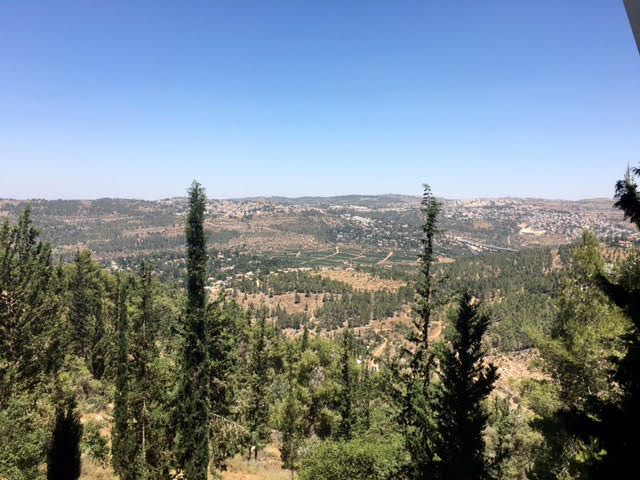
Lessons From Yad Vashem
Yad Vashem: architecture as metaphor. Outside the museum, we are shown a garden commemorating the "Righteous Among the Nations:" those who aided Jews during the Holocaust. In Israel, the criteria for this title are strict, including that the person must have acted at his or her own risk, and that he or she can't have made a profit. We are also shown another, wayward path from the one on which we are standing: it slopes downward into Yad Vashem itself.
Inside, a ceiling-high video screen depicts authentic footage of the way European Jews lived before the Holocaust. They sing, dance, salute camera men, debate - a testament to vibrancy and culture. The floor is carpet and music plays, but below this area, the carpet turns to concrete and the walls ascend and narrow. All through the museum, a cold, hyper modern architecture alienates and dehumanizes the museum-goer, and a measurable downward slant throws a pit in one's stomach.
The path winds, making one feel lost in the museum, and rendering fantastical the exit - and light - which promise themselves at the hall's end. The entire structure resembles a mix of ship hall, slaughter house, and labyrinth. Just above the entrance, a glass walkway allows passersby observe, but they remain detached from the Holocaust experience, either unable to help or uninterested.
Rather than continue with my description of the road which took the Jews from inclusion, to scapegoating, to expulsion and extermination, to liberation, I'd like to focus in this blog post on the similarities between the pre-WWII era and our own, and on the ways in which we too stand to play Righteous Among the Nations or not - to transcend inhumanity, or not. We too live in an era where economic hardship puts us on the hunt for someone to blame, though we call our problem the Great Recession, not the Great Depression. We too live in an era where asylum seekers beg for our shores, and where more often than not, we turn them away. Most frighteningly, we live in an era where opinion is homogenized, though not through a despot, but through our own action - on social media, we endlessly shame those who speak in an "incorrect" way.
What Yad Vashem leaves me interested in is how to turn away from the path that leads to the museum, and how to turn toward the path of the Righteous Among the Nations, not only at large, but in my own life. When I apply for a job I want and I don't get it, everything but me appears a convenient resting place for my newfound resentment, shame, and anger. When I come home to my roommate, or get a phone call from my mother, they seem dumb, unhelpful, and annoying; they become images of themselves, useful recipients of the blame which I now want to shed.
In Israel, remembering the Holocaust has been sacralized as a law, but we as American Jews get to ask what purpose this same remembrance has for us. After visiting Yad Vashem today, I have an idea. When we interrogate our darkest past, we find ourselves as both perpetrators and victims. Furthermore, when we interrogate our own pettiness around and mistreatment of others, we learn a general human truth: we learn that loss, rejection, and scarcity make us vulnerable to scapegoating. If we can remember this - not just learn it but actually remember it, hold fast - we can take the high path, the path of the Righteous Among the Nations, and stand there to meet our would-be selves as they come ashore, fingers outstretched.

